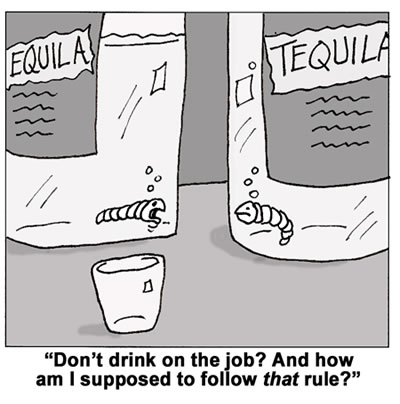Monday, December 10, 2012 3:00 AM
Safety is a serious topic. You want employees to take it seriously and have a serious attitude about the importance of safety and health on the job. And this is as it should be. But does it mean that every safety-related activity or program has to be approached in a solemn, can’t-crack-a-smile mood?
Fortunately, no. There are opportunities for fun, some smiles, and even a little lighthearted laughter while pursuing serious safety goals. In fact, these can be downright beneficial to getting the safety message across.Here's and example:

See what we mean? And while your employees are chuckling, they are also getting the safety message. Can't beat that!
What's more, laughter is well known to have a healthful physical effect, releasing endorphins and thus reducing stress. One trainer described laughter as an "internal massage." And he was right. A little laughter puts people in a good mood and disposes them to pay more attention to the serious, important stuff.
Liven Up Your Safety Programs
Learning is best achieved in a comfortable atmosphere. That refers not only to physical conditions, but also to mental and emotional comfort.Opening a training session with a humorous icebreaker, for example, can help create a relaxed, comfortable atmosphere. To get things off to a good start, a trainer could tell, for example, tell a humorous anecdote about workplace safety, tell a joke, or display a safety-related cartoon—like this one for a meeting on fire safety:

Or this one for a session on substance abuse in the workplace:

Or this one for a meeting on safe lifting:

Other Ways to Make Safety Fun—and Memorable, TooThere are many other ways to make safety more fun and more memorable. For example:
- Show a DVD to make training sessions more fun and enjoyable, too.
- Use a PowerPoint session to inject some interaction and attract attention.
- Use a quiz game format, like Wheel of Fortune or Jeopardy, to test employees' knowledge of the safety topic.
- Give small rewards (a candy, stick of gum, pocket pack of
tissues, etc.) to trainees who give the best summaries of the day's
safety meeting.
- Encourage trainees to answer their co-workers training, and let the rest of the group serves as an "applause meter" if they get the answer right.
When people are engaged in your safety messages, no matter by what means, including humor and fun, they are more likely to learn and to remember what they've learned. They are also more likely to buy into the safety message and work more carefully. And, after all, that's the whole point. You don't want them taking risks—like this guy:

No comments:
Post a Comment